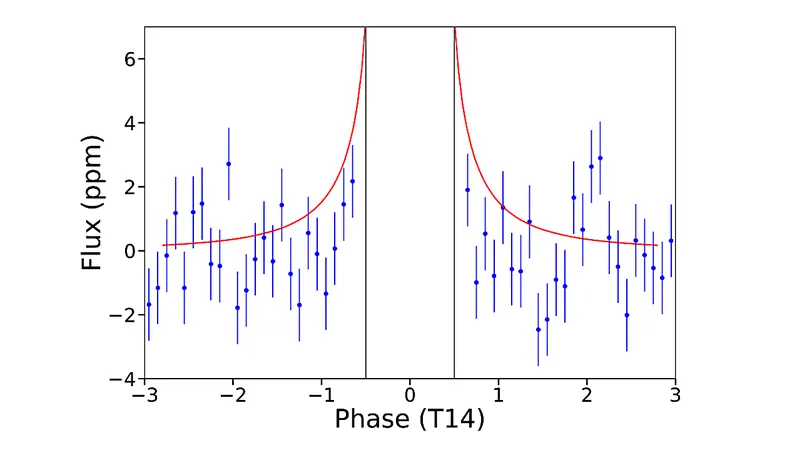
Unlocking the Secrets of Exoplanet Atmospheres: The Role of Refraction
2025-07-07
Author: Wei Ling
Revolutionizing Our Understanding of Exoplanets
A groundbreaking analysis explores the potential of detecting atmospheric refraction effects in exoplanets observed by the Kepler mission. Using advanced binning techniques applied to light curves, researchers aim to uncover critical insights about these distant worlds.
Diving Deeper with Data Segmentation
The study systematically categorizes the Kepler exoplanets by their orbital periods and planetary radii. By searching for flux variations occurring outside of transit periods, scientists can identify changes linked to the refraction of starlight through atmospheric layers.
What Does Refraction Tell Us?
The detection—or absence—of refraction effects provides valuable information about an exoplanet’s atmospheric properties, such as mean molecular weight and the presence of hazes. This data can help scientists understand how these atmospheres interact with their host stars.
Challenging the Status Quo of Exoplanet Composition
With this new approach, researchers examine whether exoplanets that lie above the 'period-radius valley' exhibit atmospheres primarily made of hydrogen and helium. Such atmospheres are susceptible to being stripped away by intense stellar radiation, revealing potentially rocky cores underneath.
Promising Findings Amidst Challenges
The analysis presents compelling observational evidence supporting the presence of refraction effects in exoplanets located above the period-radius valley. However, instances of optically thin hydrogen-helium atmospheres are surprisingly scarce among known exoplanets.
The Role of Atmospheric Conditions
This scarcity might be due to signal dampening from clouds and hazes, which are often found in thicker and hotter atmospheres of Kepler exoplanets, due to their proximity to their host stars. This insight raises intriguing questions about the climate and evolution of these alien worlds.
The Future of Exoplanet Research
As this research heads to publication, the implications for our understanding of exoplanetary atmospheres pave the way for future explorations. With every flicker of light captured by telescopes, we edge closer to unveiling the mysteries of planets beyond our solar system.




 Brasil (PT)
Brasil (PT)
 Canada (EN)
Canada (EN)
 Chile (ES)
Chile (ES)
 Česko (CS)
Česko (CS)
 대한민국 (KO)
대한민국 (KO)
 España (ES)
España (ES)
 France (FR)
France (FR)
 Hong Kong (EN)
Hong Kong (EN)
 Italia (IT)
Italia (IT)
 日本 (JA)
日本 (JA)
 Magyarország (HU)
Magyarország (HU)
 Norge (NO)
Norge (NO)
 Polska (PL)
Polska (PL)
 Schweiz (DE)
Schweiz (DE)
 Singapore (EN)
Singapore (EN)
 Sverige (SV)
Sverige (SV)
 Suomi (FI)
Suomi (FI)
 Türkiye (TR)
Türkiye (TR)
 الإمارات العربية المتحدة (AR)
الإمارات العربية المتحدة (AR)